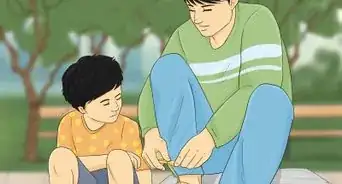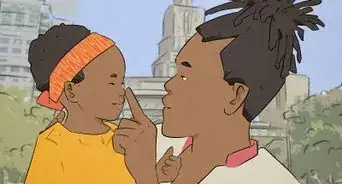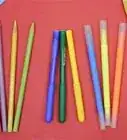This article was co-authored by Bianca Solorzano, M.Ed.. Bianca Solorzano is an Infant Development Specialist, Montessori Consultant, and the Founder of Baby Tour Guide Inc. Through her company, she helps parents, educators, and caregivers optimize baby and toddler development using a Montessori Lens. She does so by providing one-on-one consulting, running her blog, and hosting the Montessori Babies Podcast. With more than 11 years of experience in child development, she specializes in supporting parents in approaches such as purposeful language, environment setup, toys/activities that aid in development, positive redirection and behavior, and directed choice. Bianca holds a BS in Child and Adolescent Development with a focus in Early Childhood Education from California State University, Fullerton, a Masters in Montessori Education from Loyola University Maryland, and the AMI International Montessori Certification from The Montessori Institute of San Diego for children Birth-3 Years. Bianca is also a member of the National Association for the Education of Young Children (NAEYC).
There are 10 references cited in this article, which can be found at the bottom of the page.
This article has been viewed 45,399 times.
Teaching your child to recognize colors and their names is an important part of early learning. It’s also a delightful process to watch and partake in, as your little one learns to enjoy and engage with the rainbow of hues all around them. Learning colors can be surprisingly difficult for youngsters because it’s one of their first introductions to abstract concepts. With a little planning and creativity, you can incorporate lessons about colors into your everyday routines plus make them fun for both you and your toddler.[1]
Steps
Putting Together the Best Lesson Plan for Your Child
-
1Teach at your child’s pace. You can start introducing lessons about color when your children are around 18 months, but most toddlers won’t start fully grasping the concept of colors until they’re around three years or older. It’s fine and even encouraged to start teaching them about colors before then, but be sure to take it slowly and don’t despair if they aren’t getting it.[2] [3]
- One of the reasons that colors are so difficult to understand is because they exist all around us all the time and in such great variety. It’s much easier for children to distinguish between two distinct shapes than it is for them to compare two different colors.[4]
- The more examples your child has, the more likely they are to understand a color. So, even if they don’t get specific colors early in their development, repeated exposure to a color like red through verbal identification and active lessons (like sock matching and finger painting) will help them refine the concept as they grow.[5]
- You can start teaching colors from infancy using everyday conversation. For example, if your baby reaches for the red ball in a ball bin, you can highlight that action by saying “You chose the red ball! That ball is red.” This offers the baby the language for the action and item they chose.[6]
-
2Take it one color at a time. While you may want your child to master the whole rainbow all at once, they’ll be much more likely to retain lessons about colors if you introduce them one at a time. Give your child a chance to really master blue before you move on to red.[7]
- All children learn differently, but it’s generally a good idea to introduce no more than one new color per week. You can have fun with this by assigning colors for each week--Blue Week, Red Week, Yellow Week, and so on. Gear your activities towards the week’s color. Serve blue foods; have them wear blue clothing; give them blue paint to play with, etc.
- Even if you’re focusing on one color, it’s helpful to start by having another color for comparison. Your child will be more likely to understand what “green” is if they have an example of what green is not. You might, for instance, present them with two balls and say, “This one is green; that one is not green.”
Advertisement -
3Use identical things to make color comparisons. The focus of lessons should be the colors themselves, which means that you want to minimize any other differences between the objects that you are asking your child to compare.[8]
- For instance, you should use a green block and yellow block of the same size to help your child distinguish between the two colors. Don’t use a green block and a yellow ball because the child might get distracted or confused by the difference in shapes.
-
4Make your lessons interactive.[9] The more of your child’s senses that you can activate in the learning process, the better. Pick activities that allow toddlers to touch, feel, smell, and hear things in addition to just seeing the colors.[10]
- For instance, if you use orange and red fruit snacks for a lesson, your child can interact with the objects on many different sensory levels. Being able to touch, smell, and taste the learning tools will make their learning more active, which helps the lessons sink in.
- If you’re trying to get your child to remember the names of various colors, try introducing a video that teaches them a song. That way, their verbal memory will be activated by exciting sounds and visuals. If you want to combine dancing with catchy rhyming lyrics, try The Teaching Station’s “Color Song.”[11] If you want to go color by color, try The Busy Beaver’s popular collection of “Color Songs” that run from red to “grandma’s purple car.”[12]
-
5Avoid using color names before nouns. Studies show that how you verbally introduce colors to children makes a difference. To avoid confusing your child, you want to isolate the color as one property of a thing (“this ball is red”), without making it seem like it’s part of the name of thing (“this is a red ball”). Placing “red” at the end of the sentence also helps focus their attention on the color, not the thing.
- For instance, your youngster is more likely to understand blue as blue if you say, “This block is blue,” than if you say, “This is a blue block.” Keep this mind while you give any lessons about color, and your kids will retain what they’ve learned much better.[13]
Incorporating Learning into Everyday Activities
-
1Make your child’s bath a different color every week. Try adding a few drops of food coloring or colored bath salts to your toddler’s nightly bath. Talk to them about each color, and name other items that are the same color. Alternate every week, or every few days, to give them time to really learn the colors.
- You can even introduce bath toys to match the weekly bath color. Let them play with a rubber ducky during Yellow Week or a blue boat during Blue Week.
-
2Serve them brightly colored food. Tell your child the color of each food item as you serve it to them. Help them associate the color with a particular dish by reinforcing the connection with each bite. Say, “Now we’re going to have a bite of corn that is yellow...Here’s broccoli, which is green.”[14]
- If you’re focusing on a particular color, serve them food of that color. If it’s red week, give them strawberries and beets. If it’s blue week, have blueberries for dessert.
- For more advanced learners, you can use a cereal like Fruit Loops to your advantage by having your child name the colors. Pick out a single loop in their spoon, and ask your toddler: “Can you tell me what color this is?”
-
3Color their food. It's also fun to add food coloring to their hard-boiled eggs and other food you make for them, so you can say, “this egg is red.” This is especially helpful when there are few foods that are naturally the color that you’re focusing on (like blue).
-
4Let them match their own socks. This helps your child learn about colors going together in a tactile way.[15]
- Remember to start easy, with socks that are solid colors. You want the learning to be challenging but not frustrating for your toddler.
- For another version of this lesson, try making the family’s socks into a game. You can put out two baskets, one with a pair of white socks and one with a pair of colored socks. As you roll each new pair, have your youngster toss it into the basket where they think it belongs.
-
5Play dress up. Lay out a variety of clothes and accessories. Ask your child to pick out and put on specific colored items.[16]
- For instance, you can tell them, “Put on a green shirt,” “Put on a red skirt,” or “Put on a yellow necklace.”
- If you’re focusing on a particular color, ask your child to dress themselves in that particular hue. A simple morning lesson could be: “It’s Blue Week; Ashley, can you pick out some pants that are blue?” Be sure to help them with each selection until they’re confident enough to do it themselves.
-
6
Using Learning Tools
-
1Play with colored blocks or shapes.[18] This is the simplest way for your child to make clear comparisons between colors. Because blocks are identical in shape, it allows your toddler to focus primarily on the differences in their colors.
- You can start simply, by only using two blocks. “This block is red. This block is not red. Which one is red?” Once your child is able to consistently identify the red block, ask them to pick out the other red blocks from among the set.
-
2Color with crayons. Get a simple box of crayons and a coloring book. Focus on coloring with one color at a time, repeating its name as your child uses the crayon to build up their association between the color and its name.
- You can ask them, “which color do you want?” When they select one, be sure to say which they picked if they don’t already know: “That’s red. What would you like to make red? The dog? Now that dog is red.”
-
3Finger paint. Have your toddler make their own hands-on masterpieces with nontoxic paints. Give them a few colors to work with so that they can begin to intuit the differences between colors by mixing and matching them on paper. When they choose to work with various colors, they’re subconsciously noticing that there’s a difference between them.
- Be sure to limit the mess by using large sheets of paper and putting newspaper or butcher paper underneath.
- You can brew up your own kid-safe paint at home by boiling a half a cup of cornstarch in two cups water. When it reaches the desired consistency, divide it into dishes and add food coloring to make it the color(s) you’d like.[19]
-
4Sculpt with playdough. This is another hands-on way to get your youngster interacting with colors. If you’re focusing on them learning a specific color, have them play with that color of playdough. When they’re ready for more challenging lessons, you can give them a few different colors and ask them to make specific things: “Can you make me a pancake that is blue?” or “Can you make a ball that is red with a bat that is blue?”
-
5Use an app. Educational apps can be a wonderful, interactive way to teach your child lessons about colors. Simply download them to a tablet, teach your child the rules, and enjoy playing the games together.[20]
- Try iPad’s Speak Colors app to help children learn how to say color names aloud and use them in full sentences.
- Color Me Pete for the iPad is an excellent tool for helping kids visually recognize colors in their immediate environment. It uses the tablet’s camera by challenging children to locate a particular color in the space around them. When your child thinks they’ve found a match, they can snap a pic, and the app with tell them if they’ve correctly identified the color or not.
Expert Q&A
-
QuestionHow do I teach my 2 year old colors?
 Bianca Solorzano, M.Ed.Bianca Solorzano is an Infant Development Specialist, Montessori Consultant, and the Founder of Baby Tour Guide Inc. Through her company, she helps parents, educators, and caregivers optimize baby and toddler development using a Montessori Lens. She does so by providing one-on-one consulting, running her blog, and hosting the Montessori Babies Podcast. With more than 11 years of experience in child development, she specializes in supporting parents in approaches such as purposeful language, environment setup, toys/activities that aid in development, positive redirection and behavior, and directed choice. Bianca holds a BS in Child and Adolescent Development with a focus in Early Childhood Education from California State University, Fullerton, a Masters in Montessori Education from Loyola University Maryland, and the AMI International Montessori Certification from The Montessori Institute of San Diego for children Birth-3 Years. Bianca is also a member of the National Association for the Education of Young Children (NAEYC).
Bianca Solorzano, M.Ed.Bianca Solorzano is an Infant Development Specialist, Montessori Consultant, and the Founder of Baby Tour Guide Inc. Through her company, she helps parents, educators, and caregivers optimize baby and toddler development using a Montessori Lens. She does so by providing one-on-one consulting, running her blog, and hosting the Montessori Babies Podcast. With more than 11 years of experience in child development, she specializes in supporting parents in approaches such as purposeful language, environment setup, toys/activities that aid in development, positive redirection and behavior, and directed choice. Bianca holds a BS in Child and Adolescent Development with a focus in Early Childhood Education from California State University, Fullerton, a Masters in Montessori Education from Loyola University Maryland, and the AMI International Montessori Certification from The Montessori Institute of San Diego for children Birth-3 Years. Bianca is also a member of the National Association for the Education of Young Children (NAEYC).
Infant Development & Montessori Consultant As your child develop into a toddler and young kid, you can begin to incorporate purposeful activities for learning and sorting colors, like sorting colored items or using a color wheel to sort various shades of colors with the correct foundational color.
As your child develop into a toddler and young kid, you can begin to incorporate purposeful activities for learning and sorting colors, like sorting colored items or using a color wheel to sort various shades of colors with the correct foundational color.
Warnings
- Use caution when exposing your child to artificial dye. These are some of the most likely agents to cause allergic reactions. Symptoms may include itching, a light rash or even hives, and in the most extreme cases anaphylactic shock. If in doubt, do not use artificial coloring. There are non-toxic coloring fizzy tablets that can be purchased from drugstores and department stores that will achieve the same effect if you are concerned.⧼thumbs_response⧽
References
- ↑ Bianca Solorzano, M.Ed.. Infant Development & Montessori Consultant. Expert Interview. 1 November 2021.
- ↑ http://www.kevinmd.com/blog/2013/11/teach-child-colors.html
- ↑ Bianca Solorzano, M.Ed.. Infant Development & Montessori Consultant. Expert Interview. 1 November 2021.
- ↑ https://www.scientificamerican.com/article/why-johnny-name-colors/
- ↑ https://www.ronitbaras.com/family-matters/parenting-family/how-to-teach-kids-colors/
- ↑ Bianca Solorzano, M.Ed.. Infant Development & Montessori Consultant. Expert Interview. 1 November 2021.
- ↑ https://www.ronitbaras.com/family-matters/parenting-family/how-to-teach-kids-colors/
- ↑ http://www.kevinmd.com/blog/2013/11/teach-child-colors.html
- ↑ Bianca Solorzano, M.Ed.. Infant Development & Montessori Consultant. Expert Interview. 1 November 2021.
- ↑ http://www.kevinmd.com/blog/2013/11/teach-child-colors.html
- ↑ https://www.youtube.com/watch?v=k-2X98IsdNY
- ↑ https://www.youtube.com/watch?v=BGa3AqeqRy0
- ↑ https://www.scientificamerican.com/article/why-johnny-name-colors/
- ↑ http://www.whattoexpect.com/toddler/photo-gallery/games-that-teach-toddlers-colors.aspx#02
- ↑ http://www.whattoexpect.com/toddler/photo-gallery/games-that-teach-toddlers-colors.aspx#06
- ↑ https://www.ronitbaras.com/family-matters/parenting-family/how-to-teach-kids-colors/
- ↑ https://www.ronitbaras.com/family-matters/parenting-family/how-to-teach-kids-colors/
- ↑ Bianca Solorzano, M.Ed.. Infant Development & Montessori Consultant. Expert Interview. 1 November 2021.
- ↑ http://www.whattoexpect.com/toddler/photo-gallery/games-that-teach-toddlers-colors.aspx#03
- ↑ https://www.speechbuddy.com/blog/speech-therapy-techniques/10-ways-to-teach-a-child-colors/
- ↑ https://www.scientificamerican.com/article/why-johnny-name-colors/

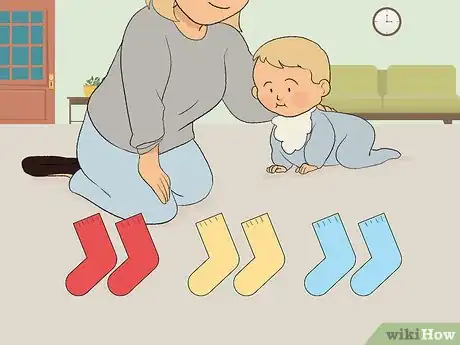
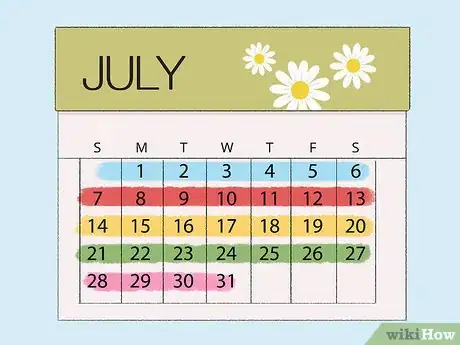




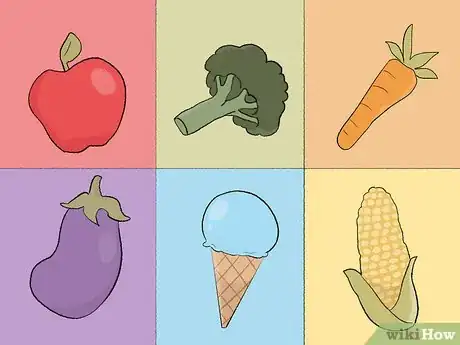
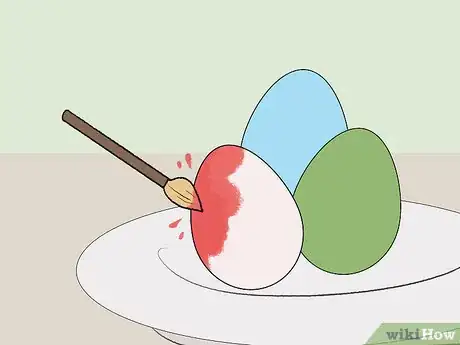

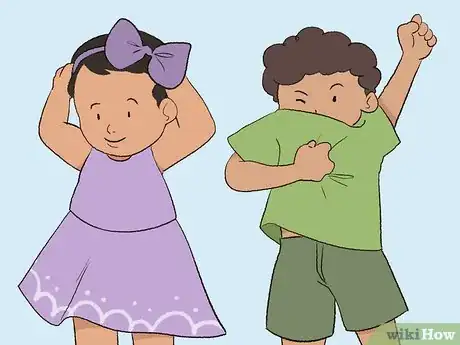

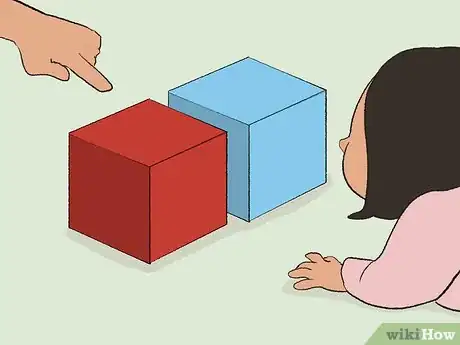
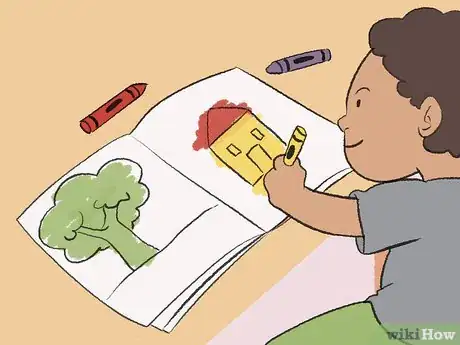
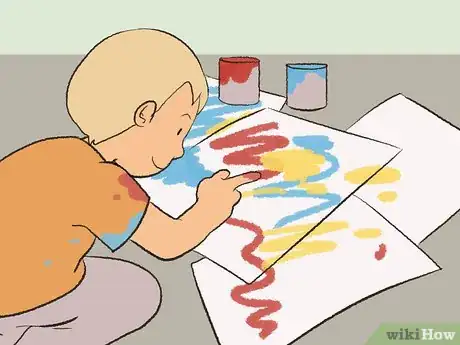
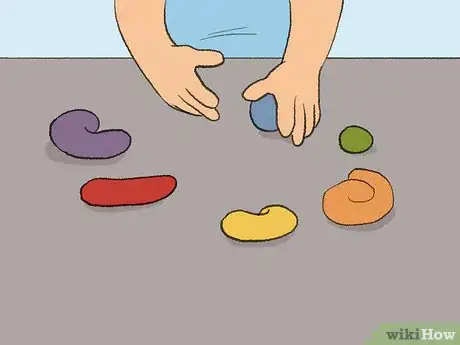
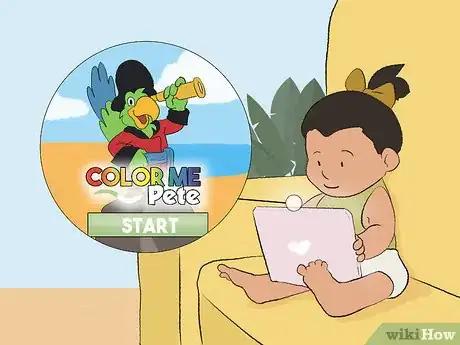
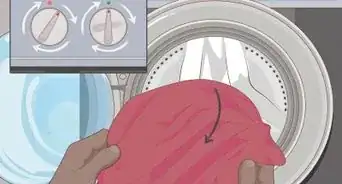
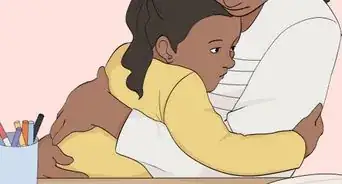

-Step-8.webp)



